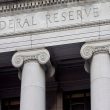by Hubert Marleau, Market Economist, Palos Management
Stocks had a rough week. They stumbled because the FOMC decided that enough was enough, by virtue of bearing some responsibility for financial stability. The committee lightly tapped the brakes to reduce speed. To the chagrin of risky cyclical assets, Jim Bullard said on CNBC Friday morning that two years of 2.5% to 3% inflation would meet the new framework, putting the interest rate liftoff at the end of 2022. It was not what the markets expected or wanted. Few traders believed that the committee was ready to reverse course and lose some credibility in the face of only two hot inflation prints that were supposed to be conceived as temporary.
The S&P 500 closed down 81 points or 1.9% to end the week at 4166, after the Federal Reserve calmly signalled it expects to increase the benchmark lending rate ahead of the previous schedule. Additionally, the US Dollar Index popped 2.4% to 92.28, the price of gold tumbled 135 points to $1763 and yields on 2-year Treasury Notes increased ten basis points to 0.25%. In other words, the speculators did not like the idea that the Fed had just implicitly approved a slow, but unstoppable movement toward a normalization of interest rates and a more standard monetary stance.
Yet, I think that Powell's merry band did fairly well, given the difficult situation. Numbers on the labour market have been disappointing, while those on inflation have been rough. Nevertheless, news on the economy was generally optimistic. Firstly, leading indicators came in as expected, up 1.3%, just like last month, and in line with consensus. Meanwhile, macroeconomic surprises rose a lot in the ten days and the Atlanta Fed’s GDPNow forecasting model is predicting a 10.3% annual rate of increase in Q2. Secondly] if there was a sustainable inflationary environment on the horizon, wouldn't 10-year and 30-year bond yields trend upwards? On the contrary, they are falling. The expected pullback in fiscal spending, the debt load, the hard process of hiring and the surge in productivity are helping immensely to hold down inflationary expectations. Incidentally, the bond market is probably starting to realize that the taper the Fed is about to announce will not tighten financial conditions. The budget deficits will drop a lot more than the pace of bond-purchases will decline.
Investors should take note that the monetary authorities did not exactly upend their easy-money policies. The Fed will continue its $120 billion monthly bond-buying program and pay 0.125%
on bank reserves. In this connection, three days of nasty trading with 70% of the S&P 500 stocks falling after a FOMC meeting does not present a new trend.
The market should have sobered up in the aftermath of the FOMC meeting. The Fed just wanted to prove to the market that it was not behind the curve. Michael Pond, head of global inflation-linked research at Barclays, made this thoughtful remark to Barrons: “If any time the Fed gets a whiff of inflation and they come in and slap it back down, why would any investors worry about long-term inflation being too high?” The bottom line is that the more the Fed is concerned about too high inflation, the less the market should be concerned.
Commodities, seen by many investors as a hedge against inflation, took the brunt of the selling. It's my view that the reflation trade took a hit more from China’s decision to sell some raw materials held as strategic reserves than anything else. As frustrating as it may be, I believe that investors should stick to their guns.The Fed’s approach to average inflation targeting is still on, and there is no compelling reason to think that the expansion is in jeopardy. While I understand that high growth and low inflation is not a permanent feature of a developed economy, I’m not succumbing to the notion that the burden of debt incurred during the pandemic will act like deadweight on the economy. What we had was a major transfer of free wealth from the government sector to the household and corporate sectors.
I have the feeling that the episode was a knee-jerk reaction which should turn into a fast and furious out-and-in trade. Experienced traders rarely place a lot of weight on a single event, no matter how important it may look at the time. But the reaction both in the media and asset prices said something about how far the monetary authorities can go. Investors will want to hear what monetary officials other than Jim Bullard have to say about what is going on at the Fed before drawing definitive conclusions. Late on Friday afternoon, Minnesota Fed Chair Neel Kashkari said that he opposes rate hikes at least through 2023. I suspect that he’s in the camp that believes that the recovery is over and that the economy is about to enter into an expansion phase that will resemble what we had in 2019.
The Pivot:
Without lifting a finger, the Fed opportunistically satisfied the hawks, but not the doves. It pivoted because the recovery and inflation rates rose faster than originally forecasted. The monetary authorities are not blind and see the economic prints, Covid cases and financial metrics as clearly as we do: probably better. Forcefully, they adjusted their expectations. Firstly, the Fed raised its 2021 and 2022 growth target to 7% and 3.3% respectively, compared to 6.5% and 3.0% in March, with the unemployment rate dropping to 4.5%, in line with earlier predictions and core inflation is expected to be 3.0% this year. The latter is sharply higher than the 2.2% expected in March, before falling back to 2.1% in 2022. Secondly, the Fed removed language that the health crisis “continues to weigh” on the economy.
Speculators were surprised because the market had not set itself up for that possibility. Upon reflection, they should have been. The opportunity for the Fed to change its message was clear and present. Since the last FOMC meeting, credit spreads declined, inflation expectations fell, the dollar slumped, commodity prices rose, and liquidity surged. In other words, the financial conditions were excellent to execute a hawkish shift. Thus the Fed’s actions were rational and natural.
Of particular importance was the neglect of most traders that the Fed was preparing the terrain for an announcement of a formal monetary transition. Based on five observations, the Fed was surreptitiously smoothing the way for policy shift.
Three weeks ago, it announced that it would unwind its corporate bond holdings it acquired last year through an emergency lending facility.
Over the past few weeks, the NY Fed has massively sold Treasuries via overnight reverse repos to counterparties, actually removing liquidity from money markets and indirectly offsetting the monthly QE purchase of bonds.
This week, it decided to raise the interest rate on excess reserves to 0.15% from 0.10%, and the rate on overnight reverse repo to 0.05% from zero, trusting that these actions will effectively drain money out of the banking system.
During the press conference, Fed Chair Jerome Powell admitted that the monetary officials are “talking-about-talking-about” the idea of scaling down or unwinding the Fed’s bond-buying program. In other words, Powell officially opened the discussion.
Last Wednesday, the central bankers released fresh interest rate projections needed to achieve a job market back at full strength and an inflation on track to average 2% by late 2023. The Fed’s so-called median dot plot forecasts showed that more than half of its 18 officials expect rate increases by the end of that year. Almost half of them expected an increase or two in 2022.
What is perplexing is that the economy is assailed by several conflicting forces. Productivity is rising but so are wage rates; inflation is transient but cyclical price increases are prevalent, and the money supply is decelerating while its velocity is accelerating. Interestingly, fund managers believe that the current high rate of inflation is temporary, while business operators think that the pace is cyclical. Many analysts share the opinion that the shortage of labour, as reflected in rising wage rates, could lead to structural inflation while many others are arguing that the surge in productivity is permanent and sufficient to keep unit labour cost in check. Lastly, monetarists are saying that the Fed is doing its best to suppress money supply growth while others are arguing that the reopening of the economy is agitating its velocity.
Indeed, opinions are messy and nothing is tickety-boo. We are living through unprecedented times. Here is one example among many controversies. Payrolls are still substantially below where they were pre-pandemic—some 7.6 million jobs short. According to the most recent JOLTs report, as many as 5.3 million workers, aged 60 to 64, have left the labour market, with no intention of coming back. They just quit to retire early. There is no way of knowing if this is actually true, but dynamics would be very different if only 2.3 million jobs are missing. The Fed may very well be better equipped than most to judge the future, yet the officials are humans—and humans are not very good at identifying major long-term turning points.
Consequently, the process towards a more responsible monetary stance will be slow and gradual. As reality unfolds, the Fed will likely be very data dependent, making moves which will respond only to what the financial climate shall allow and the economic environment will bring.
At this point, I agree with the Reuters poll that the Fed will probably announce a taper in September, launch it in January and declare two rate hikes in 2023. Thus the runway for completing the tapering process may end up shorter than originally anticipated. Nevertheless, the overall path will forcefully be argued back and forth, making it a long, exploratory, and tedious trial. As such, the risk of accidents will always be present and surely the market will hit air-pockets.
But the transition might not be that terrible because monetary policy will remain basically accommodating through the piece. The shift does not mean tightness. In this regard, the pace of the money supply would need to fall to an annual rate of roughly 6% from today’s 18%, the policy rate would have to increase 25 bps at least three times to approach the neutral rate, and the yield curve (10s minus 2s) would need to narrow by as much as 1.25%. By this time next year, the economy will likely be back to square one. History shows that the stock market has performed rather well when the Fed funds rate rises especially when it is pulled up by economic growth or when unfeasibly generous and inflationary policies are withdrawn.
Based on rate hikes beginning in 1994, 1999, 2004, and 2015, Credit Suisse calculated that the average returns for the S&P 500 were up 18.3% after 12 months, 28.4% after two years and 34% after 36 months. We may indeed be in a lengthy bull market for stocks.
Copyright © Palos Management














